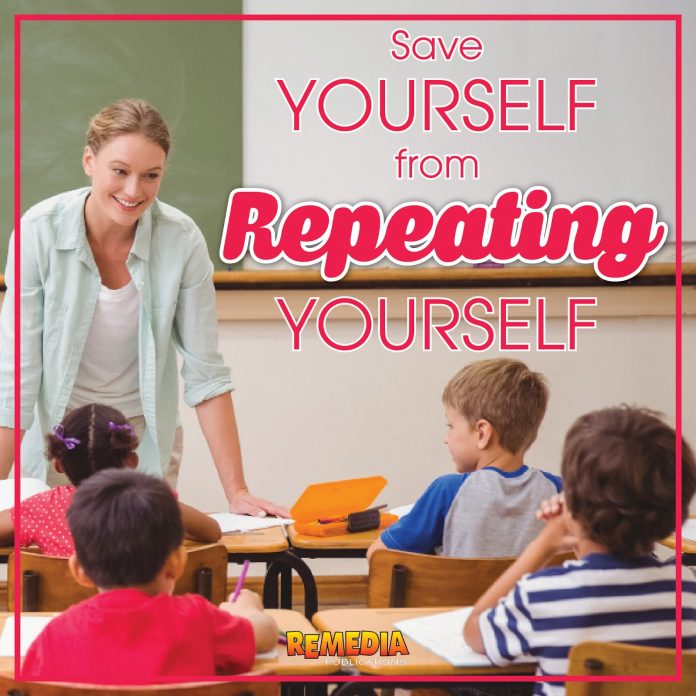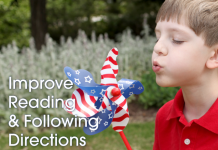Some students need instructions repeated, and that’s okay! But you can head-off confusion and interruptions by using these seven tricks that will help you avoid the “What are we supposed to do?” question after you’ve already given your students instructions.
1. Please, get out a pen and paper.
If you’re giving big instructions explaining the giant essay that students must complete by Friday, with 631 words, double-spaced, in curlz font on the topic of deforestation (please don’t do this to your kiddos), you may want to make sure that they are writing these details down.
2. What page did you say?
Designate a spot on your board for important information that your students can always know to refer to. For example, if you are asking them to complete the questions on page 85 of their math textbook, write that on the board. This will help avoid the “What page did you say?” question.
3. Repeat after me.
Ask students to repeat the instructions back to you. Ask different students to confirm the instructions, for example: What page are we turning to? And what will we do once we get to that page?
4. Put your finger on it.
You’ll know students have listened and followed your instructions right away by asking them to “put your finger on it.” For example, tell students to turn to page 143. Find the word laughter and put your finger on it. When everyone’s finger is on the word, I’ll know you’re ready.
5. Tell your partner.
After you’ve given instructions, have each student turn to their partner and explain what they are doing. Together, they will help fill in any gaps the other missed.
Do you find yourself repeating instructions after you’ve just given them? Try these 7 tips from @remediapub #edchat
{ Tweet This }
If you are still asked, “What are we supposed to do?”
6. Please, ask a friend.
You’ve been there…you give instructions and start the task at-hand. You begin helping one student when another interrupts you to ask, “Um, what are we doing?” This would be a good time to say, “Please, ask a friend.”
Tip: This is a good procedure to implement in your classroom: Ask a friend for help, before you ask me. This will help your students be more independent and self-sufficient. Not to mention, you’ll have fewer interruptions.
And even if you aren’t asked the question…
7. Whatcha doin’?
 |
| If only you looked this cute when asking your students: What are you supposed to be doing right now? |
More like: What are you supposed to be doing right now? Instead of sounding like a nagging broken record when you find a student off-task, help that student get back on task by simply asking this question.
Still finding that you’re repeating yourself?
Head over to this tip to get a free hands-on activity that will improve students following directions skills.
Our Listen, Remember, & Do books are designed to teach listening skills and to provide practice in remembering and following oral directions. With these books, the teacher reads a short story or a set of instructions aloud. The students listen and do an independent activity page that features memory exercises, vocabulary development, and thinking skills.









